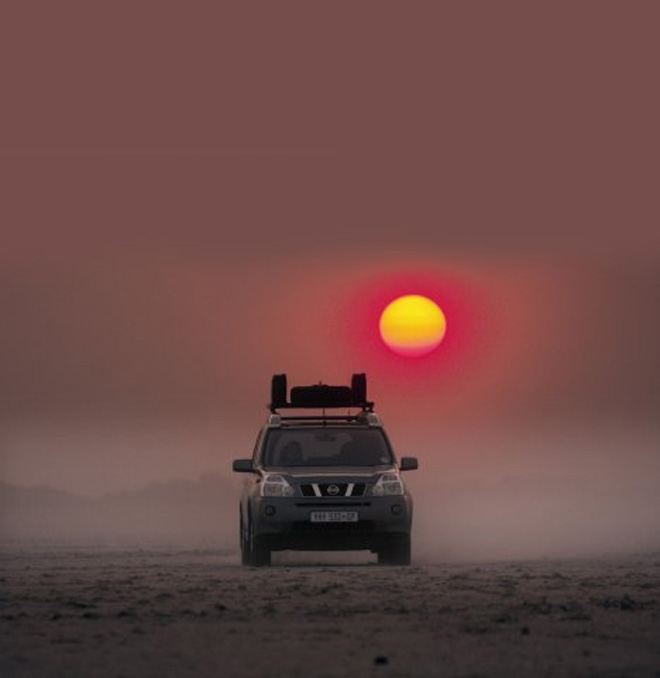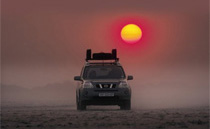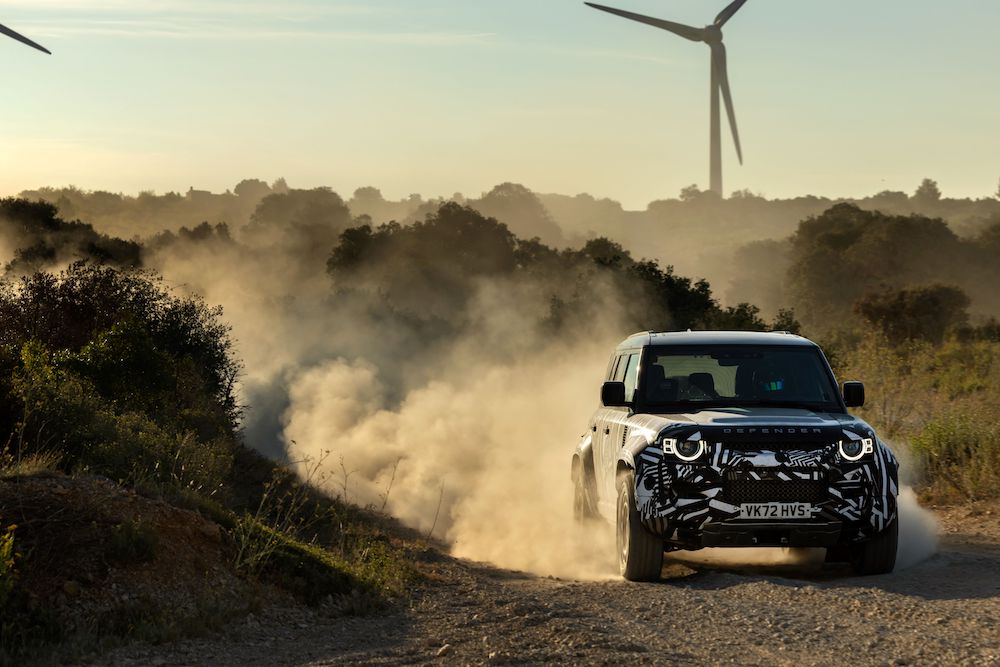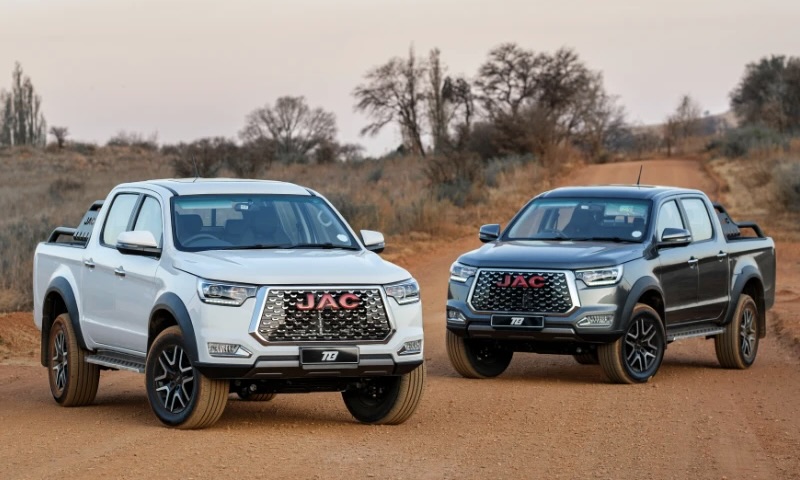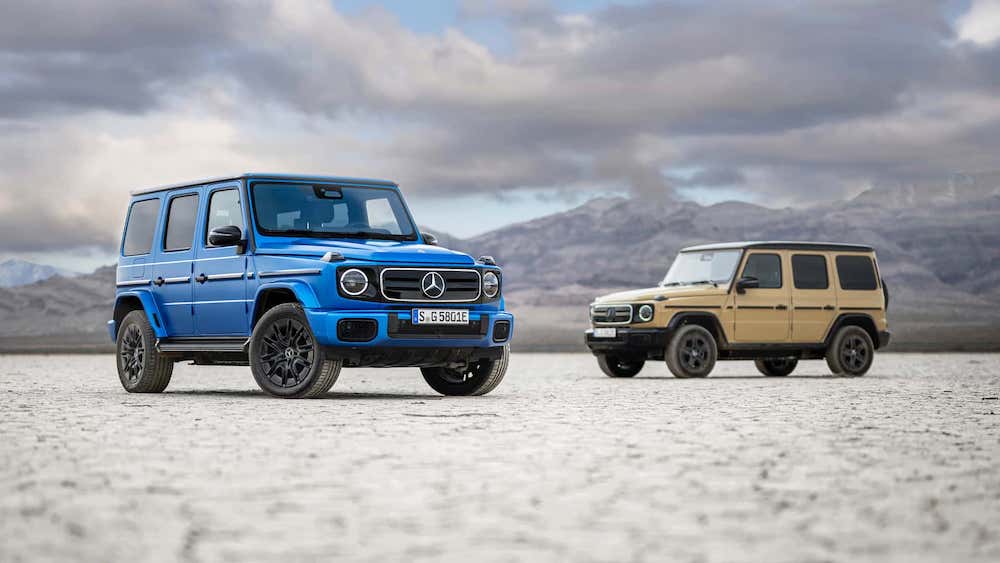Text: Danie Botha
Photography: Jannie Herbst
Makgadikgadi Pans. A total of 16 000sq km.
It is the largest salt pan complex in the world, and is said to have formed the bed of the ancient Lake Makgadikgadi, the water of which evaporated millennia ago.
The Makgadikgadi, a series of salt pans, in places interrupted by desert sand, where archaeological digs have revealed the presence of prehistoric man after an abundance of stone tools were found there.
Stone tools, the origin of which has been dated to before the era of Homo sapiens, or man, as we know it today.
It is said that one can see about 5km across the surface of the pan, from an average person’s height above the salty surface. Further than that the earth’s curvature takes over, and the rest of the wide expanse of pan is invisible to the naked eye.
That is how flat the Makgadikgadi pan is.
When it rains here, though, this tranquil setting can be turned into a nightmarish quagmire, with the most slippery mud one can imagine. Just ask a Pretoria couple who got stuck on the pan for two weeks. After 14 days there were eight vehicles stuck, as fellow off-roaders attempted to rescue the stricken parties?
Indeed, when the pans are wet, even the hardest of 4×4 hardware will face a massive, if not impossible, challenge negotiating the existing tracks.
And this is exactly why a few concerned eyebrows were raised when we mentioned that we were heading Makgadikgadi’s way? in a “soft-roader” Nissan X-Trail 2.0 dCi 4×4.
Our target was to be Kubu Island, a rock island which, seemingly completely out of place, stands guard over the vast nothingness that is the Makgadikgadi pans.
The latest X-Trail, although by no means a pukka 4×4, does come with some impressive 4×4 hardware, albeit not in the traditional sense of low-range gearing, locking differentials, and so on.
It has 203mm worth of ground clearance, which favourably compares to most other vehicles in its class. The Nissan’s four-wheel drive system is called All Mode 4×4-i, and is controlled electronically, rather than mechanically, for more speedy operation, and to save weight.
The system works via a simple rotary dial, situated in front of the gear lever, in the centre console. It offers three settings: 2WD, Auto, and Lock.
In the 2WD setting power is sent to the front wheels only, for maximum fuel efficiency. In Auto mode the system monitors engine speed and acceleration characteristics. It automatically distributes the required torque to the rear wheels via an electronically controlled coupling system. But it does this only when the sensors at the wheels tell the computer brain that the front wheels may loose traction, or have lost traction.
This torque transfer happens in the blink of an eye, and even when the X-Trail is stationary on, say, a muddy road, and the driver boots the throttle, the system will take the throttle opening in consideration, and automatically send torque the stern’s way.
And finally, in Lock mode, the system ‘locks’ the centre clutch in a 57:43 split between the front and rear wheels, for more challenging off-road work.
We expected the latter setting to be the one most in use on our adventure to Kubu Island, especially if it was wet. Although not applicable to the very flat Makgadikgadi expanse, the Nissan is also equipped with hill start assist (HSA) and hill descent control (HDC).
But to go to Makgadikgadi without suitable back-up, especially in what is essentially a city runabout 4×4, would be rather short-sighted.
So we enrolled the help of professional tour guide and Leisure Wheels Safaris frontman, Kalbas Nell. He joined us in his super-duper Toyota Cruiser 4×4 bakkie, with recovery gear including a heavy duty winch and snatch straps.
Heinrich Brüssouw comes to the party
And so we headed Botswana’s way. The weather forecasts did not predict any rain. Kalbas and company were waiting for us at Khama Rhino Reserve, a short hop after crossing into Botswana.
Instead of rain, he warned of searing 40 degrees Celsius temperatures.
Good show.
Searing heat we knew we could handle, largely thanks to the Nissan’s efficient climate control system. We were not so sure about the rain part, though.
The drive from Johannesburg to the Stockpoort border post, in Limpopo province, was a doddle. But a twisty section between the towns of Vaalwater and Lephalale wasn’t a doddle at all. Instead, it was fun!
The X-Trail is no sports car, of course. But as far as compact SUVs go, it offers a surprisingly engaging drive on tar. It sticks in the corners, with none of the excessive bodyroll normally associated with pukka 4x4s.
And the feedback and feel from the electrical power steering system is very good. But the X-Trail’s biggest asset on this section of road, and all roads for that matter, lies hidden under the bonnet.
Although the latest Nissan X-Trail arrived here in April 2008, it was initially only available with a choice of two petrol engines: a 102 kW 2,0-litre, and a 125 kW 2,5-litre. The turbodiesel option only arrived earlier in 2009 – but it is, without a shadow of a doubt, the pick of the X-Trail bunch.
The modern 1995cc four-cylinder delivers 110 kW of power at 4000 r/min and 320 Nm of torque at 2000 r/min. The grunt is sent to the driven wheels via a slick six-speed manual gearbox, or Nissan’s continuously variable transmission (CVT). Our version was the manual six-shooter.
Most notable was the Nissan’s ability to maintain its cruising speed in top gear. For most overtaking situations rowing the gearbox was not even an option. We simply had to boot the throttle, and off she went, in a flurry.
And it’s quiet too. So quiet at cruising speeds that it was impossible to actually identify the diesel engine as being a diesel engine. The cabin itself could be described as the Heinrich Brüssouw of compact SUVs. Brüssouw may not be as flashy and flamboyant as fellow Springbok loose forwards Schalk Burger or Pierre Spies, but boy, does he get the work done!
Ditto with the Nissan. Sure, it’s all luxury, but not in a “oh my!” kind of way. Instead, it offers all the right controls at the right places, and all the controls are light and intuitive to use. So, it’s not overly flashy, but it certainly is more than up to the task of doing a solid job. Another X-Trail virtue is its versatility, and this versatility starts in the boot. It offers 603-litres of space with the rear seats in place, a massive increase of 193-litres over the first-generation vehicle.
Much like a customised overlanding vehicle, the Nissan’s boot also gets a unique double deck boot system, with a sliding drawer with moveable partition walls under the “first-storey” floor. The “floor”-part and the drawer can be removed to increase load space too.
To further enhance its versatility, the rear seats recline and can be folded down to create a flat and vast loading area. The rear seats also feature a 40/20/20 split folding system.
Like Mr Brüssouw, the Nissan is a safe choice. It gets anti-lock brakes (ABS), Brake Assist (BA), electronic brake-force distribution (EBD) and active brake limited slip (ABLS) system. The latter applies a braking force (via the ABS) to any wheel that looses traction while directing torque to the opposite wheels with grip.
Rounding off the safety arsenal are six airbags, including the dual stage front and passenger bags, thorax side airbags and full-length curtain airbags on both sides.
The small Stockpoort border post, about 85km north of Lephalale (formerly known as Ellisras) is a wonderful place, unlike the more main stream Martin’s Drift, a few km further north along the border. It took us about eight minutes to complete the crossing.
We were in Botswana. The first dirt road, to the town of Mahalapye, loomed. It was time for that rotary dial to come off the reserve bench. With the setting changed from 2WD to Auto, we tackled the 70km or so of dirt road.
Just like Mr Brüssouw, the Nissan got stuck right in without any fanfare, and sailed along effortlessly, at more than 100 km/h.
Expecting a bit of drifting, a bit of skidding, a bit of bouncing, and maybe even times when the traction and stability control systems would have to earn their pay, we pushed on.
But alas, it was all stable, the Nissan tracking true and straight, and the safety electronics were never bothered.
Rain? Bring it on! Wait, maybe not the rain? but the Nissan inspired a lot of confidence on that bumpy dirt road.
We soon arrived at Mahalapye, and the main tar road leading north into the country. Now it was again plain sailing as we made good time to Palapye, then Serowe, and finally, the turn-off to Paje.
With the sun tucking in for the night, we arrived at the Khama Rhino Sanctuary.
Next stop: Kubu Island, and the Makgadikgadi pans.
The glass on the dashboard-method
Long before the days of the K53 driving test, the N1 highway, and metro police officers, car drivers’ skills were tested by placing a rather full glass of water on top of the vehicle’s (flat) dashboard.
The driver then had to drive the vehicle, performing all necessary tasks, without spilling the water.
No matter what kind of suspension a vehicle is fitted with, or how smooth the driver is, no glass of water will remain full on the dirt road leading from the town of Lethlakane to Kubu Island, a drive of about 80km. In certain sections it is corrugated, in others it’s rocky, and elsewhere it is sandy.
And for the last 25km before one reaches Kubu, as the track enters the pans, it gets rutty, slippery and dusty.
The Nissan rides on a fully independent suspension set-up comprising strut-type suspension up front, and a multi-link system at the back. Both ends are mounted on separate rubber insulated sub-frames, and the X-Trail handled the initial challenge of the rocky road with ease, the cabin remaining insulated against any excessive vibrations and noise.
The sand was next. Here the challenge was not only to maintain momentum, but we were also worried about the Nissan’s 203mm worth of ground clearance, and the high middelmannetjie.
But we need not have worried. The Nissan sailed through unscathed, the underbelly touching only once, with the All Mode 4×4-i system in Lock mode.
Arriving on the pans we were met with an unfamiliar scene? instead of vast, flat nothingness, the pans were partly covered in grass, thanks to heavy rains a few months ago.
And the rains were also responsible for the deep tracks next to the main ‘road’ leading to Kubu, telling of great 4×4 hardship. These were the battle scars left by a delegation of Land Rover owners who braved this section, in the rainy season, to meet up with Kingsley Holgate’s Boundless Southern Africa expedition. It took the convoy 22 hours to cover about 65km?
The surface of the pans is extremely deceptive. With the high temperatures, the top layer of mud is baked into a hard crust. Break through that top layer though, and a slippery, slimy, gooey and unbelievably sticky mud is exposed. It is a mud that sucks in the vehicle. Indeed, it is horrible stuff.
So we made sure to stick to the dry parts in the Nissan X-Trail. And so, finally, we arrived at the great rock in the pans that is called Kubu Island. And to cap off a spectacular setting, the pans surrounding the island were completely devoid of grass. It was as flat, and as barren, as it possibly could be.
Mother Nature, seemingly not impressed by our hassle-free progress to the island, decided that we should at least endure some hardship. So she sent mighty winds, which battered our camp site, even though it was partly protected by Kubu’s rocky outcrops.
Ah, the sunset. Not even the blustery wind could detract from that moment. It was a truly remarkable event.
And we had made it. The Nissan X-Trail 2.0 dCi 4×4 LE was still in one piece.
A little bit of Whiskey, and a lot of trouble
Whiskey, the Kubu campsite “manager”, came round to our campsite for an early morning welcome. Good thing the coffee was on the boil, as he seemed thirsty. Good thing too, that we had extra breakfast, because he seemed rather hungry too. And good thing too that we had some extra cigarette supplies, as he seemed to be in dire need of a smoke.
And so, after our breakfast with Whiskey, we headed off towards the Tebelelo village, situated about 20km from Kubu itself. To get to the village one has to traverse more pan, more dirt, more sand, and more rocky patches. But by that stage we were confident in the Nissan’s abilities, and again, it offered a comfortable and composed ride over the rougher sections, never loosing traction.
Heck, maybe it did loose traction, but with the All Mode 4×4-i system in “Auto” mode, we didn’t notice a thing.
The Tebelelo family, consisting of about 10 members, has been living here, seemingly in complete and utter desolation, for nearly 20 years. But why here? Why not closer to a town, and other human beings?
“We have a well with water. We have good grazing for our cattle. It’s nice here,” said Gakenaope Tebelelo, as he adjusted his cellphone, perched precariously on a shelf in his hut. He explained that his phone only picks up a faint signal at that very specific position in his hut. Anywhere else, and there is no signal for many km.
We headed back towards Kubu. We had decided earlier to head back to South Africa a day earlier, following editor Johann van Loggerenberg’s tragic accident.
The Nissan was packed. Kalbas was loading the last few supplies into his Cruiser.
We decided to go for a last ride around the Island. It should have taken us five minutes.
In the end, it took eight hours?
Next month: When good pans go bad
It wouldn’t have made the slightest of difference if we were in the most hardcore of hardcore 4x4s. We knew about the pitfalls of a pan. We knew about the top layer is baked into a hard crust by the sun, and that the mud underneath is a quagmire. We also saw a track that led onto the pan, and decided a last photograph of the vehicle and Kubu Island in the background would be just grand.
But we didn’t realise that all the rain that had fallen in the area some months ago would play a major role in a major recovery exercise. Kalbas Nell still has sleepness nights about that day.
Nissan X-Trail 2.0 dCi LE 4×4
Engine: 1995cc, four-cylinder, turbodiesel,
Power: 110 kW @ 4000 r/min
Torque: 320 Nm @ 2000 r/min
Gearbox: Six-speed manual
4×4 system: All Mode 4×4-i, with lock mode, HSA, HDC
Driving aids: VDC with traction control, active brake limited slip (ABLS), ABS, EBD
Ground clearance: 203mm
Fuel capacity: 65-litres
Average consumption on trip: 8,9 litres/100km
Range per tank: About 730km
Price: R410 000 (includes a three-year/90000km service plan)
Rack it
Bobby Langer from Front Runner looked at us with a wry smile when we dropped off the Nissan X-Trail 4×4 at his Midrand-based shop, to have a roofrack and accessories fitted. It was the first example of the latest-generation X-Trail to land up in his workshop. As always, Bobby was confident.
“Leave it with me. We’ll make a plan.”
And a plan he made, although it was an experimental one. Bobby fitted his trademark Wind Cheetah aluminium roofrack to the Nissan’s trendy roofrail system. He then added a spare-wheel bracket and two jerry cans.
“I’d have preferred to mount the rack on the roof itself, using the standard gutters. That would make it much sturdier, and able to carry heavier loads,” said Bobby.
